Diaphragm Cramp-Contracture (DCC) in SIDS
![SIDS breakhthrough flow diagram. It involves spontaneous diaphragm cramp-contracture (DCC) causing respiratory arrest and novel airway obstruction created by RAM contractions to breathe against diaphragm immobilized and inactivated by the cramp. Supported by autopsy evidence including contraction band necrosis which occurs under terminal anoxia in SIDS [Kariks 1989, Silver 1992].](https://amiabnormal.com/wp-content/uploads/2025/01/DCC-FLOW-MAIN-Gebien-LBL-1024x576.jpg)
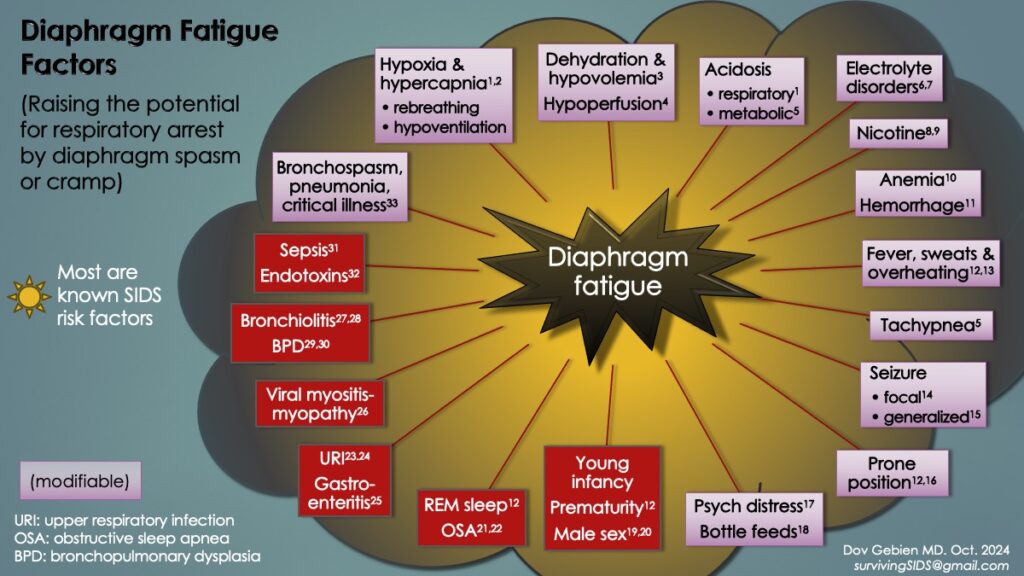

Emerging SIDS Discovery 2025 – Inadvertently made by a practicing community physician in Toronto, Ontario. It all started with a 7-year-old boy who recounted, 45 years after the fact, recurrent life-threatening breathing emergencies that had awakened him from sleep sporadically throughout his childhood and youth. In medical terms, we have described this as “paroxysmal bearhug pain apnea”. How he survived it is fascinating, essentially breathing out to breathe in, “like a pilot in a centrifuge” (see below).
The story is astounding. It continues to unfold at its own pace. It will take time to experimentally prove this killer mechanism: novel diaphragm cramp-contracture (DCC). After two years of full-time research, it is becoming clear that DCC is responsible for many non-cardiac sudden unexpected deaths in infants (SIDS) as well as sudden unexplained deaths in childhood (SUDC) and those in adults (sudden “cardiac” deaths). If you have experienced similar symptoms then please let us know.
Adverse childhood experiences (ACEs) and grief need to be explored in all children and adults. It can present in seemingly unrelated ways like delayed speech, social or language problems. The sooner the better. Even greater things await, beyond this SIDS discovery!
Please support our GoFundMe campaign. Proceeds will be used to cover publication costs, 3D diaphragm anatomical imaging and more. Dr. Gebien has committed his own funds and his time to this important breakthrough. The sooner DCC is confirmed in laboratory, the sooner will young lives be saved from SIDS and other breathing problems in vulnerable infants. Thank you.
Diaphragm cramp is exceptionally rare but strikes most often during sleep because of added work of breathing from prone positioning (face-down), obstructive sleep apnea (OSA) and/or REM sleep shutdown of the accessory respiratory muscles by the central nervous system. The added workload worsens diaphragm fatigue and may push it past the cramp threshold of DCC.
It occurs more often in young, premature and male infants because of higher ventilatory workloads and weaker respiratory muscles. Their diaphragms are more vulnerable to fatigue and cramp.
Diaphragm inflammation (myositis) and damage (myopathy) from viral or bacterial infections also fatigue the diaphragm. This explains why SIDS is more common when respiratory infections were present [Southall 1990].
Nicotine is exceptionally dangerous in young children when ingested or absorbed by second-hand tobacco smoke. In overdose, it paralyzes the diaphragm by contracture. In sub-toxic doses, like babies sleeping upstairs in a heated home in winter, nicotine reduces the diaphragm cramp threshold (diaphragm fatigue).
To prevent sleep-related DCC at any age, drink some fluids and avoid sleeping face-down (prone). If ill with a cold or flu, drink plenty of fluids and take Ibuprofen or Tylenol before sleep. For infants, give medications and fluids BEFORE naps and sleeps. Ensure body ventilation can occur (no over bundling or polar fleece fabrics). Do not nap with the baby on your chest at any time (avoids rebreathing and an added diaphragm workload). Ensure good ventilation in the bedroom with a gentle fan or open window (prevents rebreathing).
Pacifiers (dummies) and thumb-sucking should be encouraged, as they are SIDS-preventative (at any age for that matter)!
Our new SIDS prevention measures can be downloaded here. This solitary document will save babies from succumbing to SIDS. It also is the best baby shower gift ever. Please remember our GoFundMe.
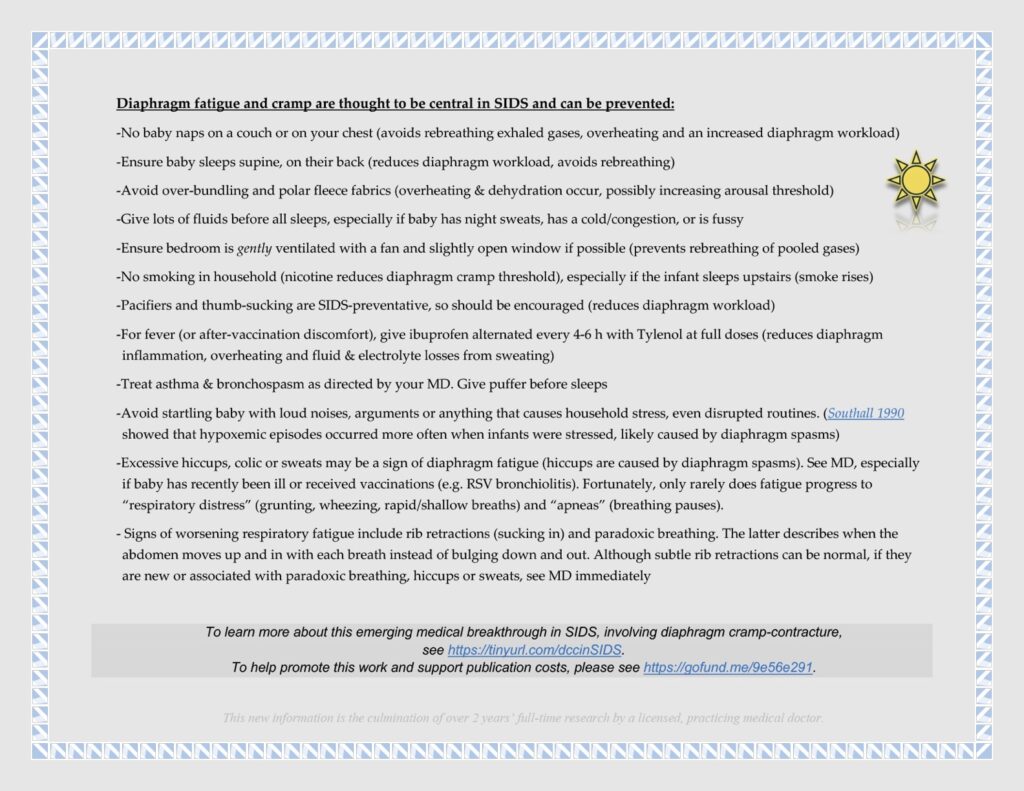
Learn the rescue breath technique. Dr. Gebien demonstrates the patient’s rescue breath technique below. It is used to reverse the painful bearhug and inspiratory arrest of diaphragm cramp. Most people would never have experienced this unusual painful condition, however, it should be learned just in case.
Diaphragm Spasms, Flutter, Cramps and Paralysis
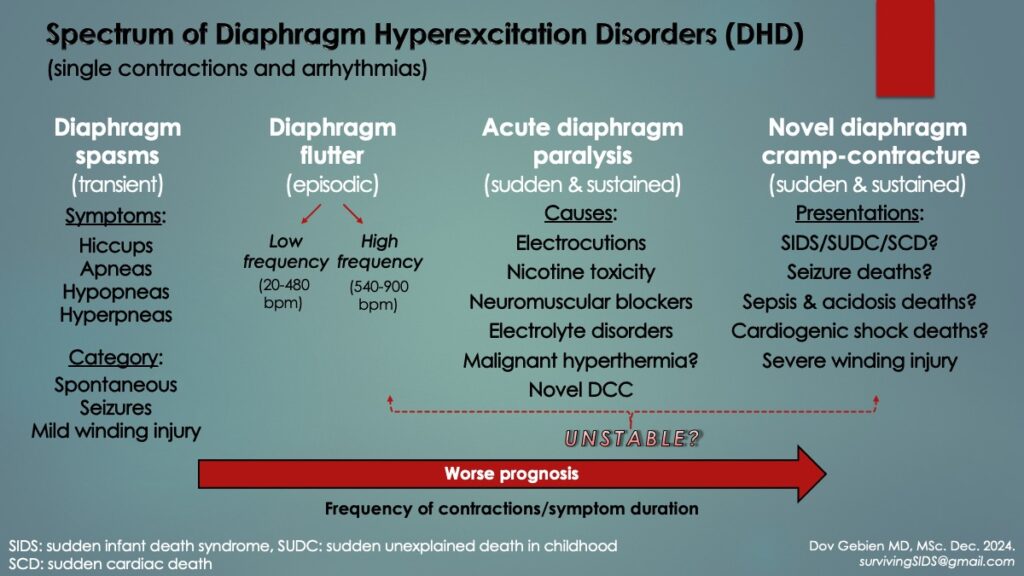
Diaphragm Fatigue and Excitation
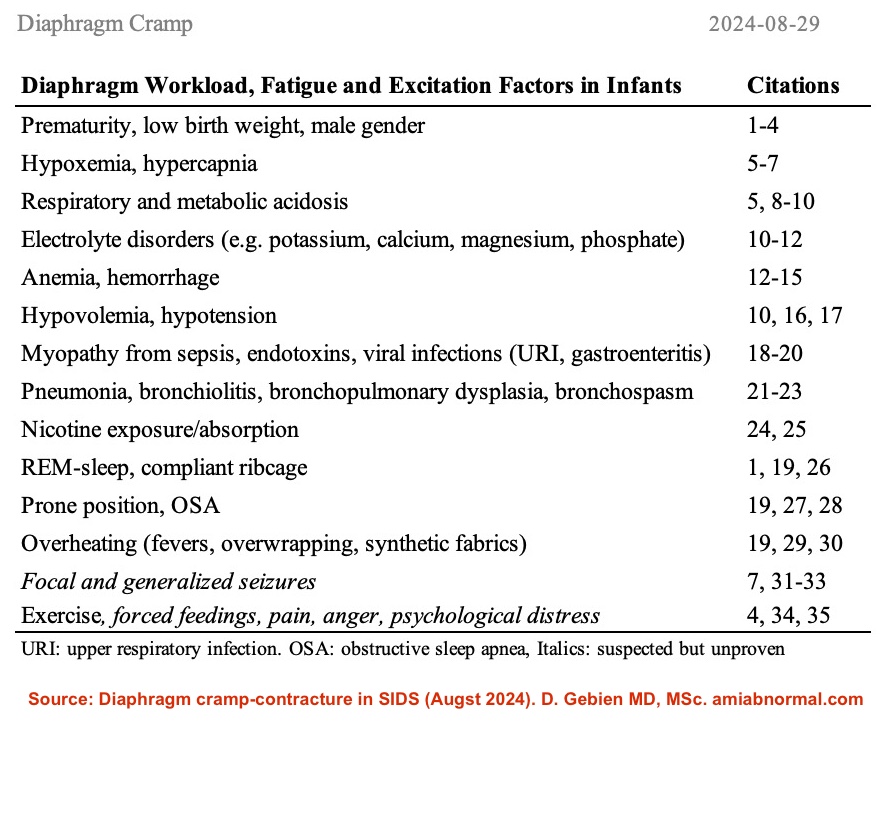
Diaphragm Paralysis from DCC
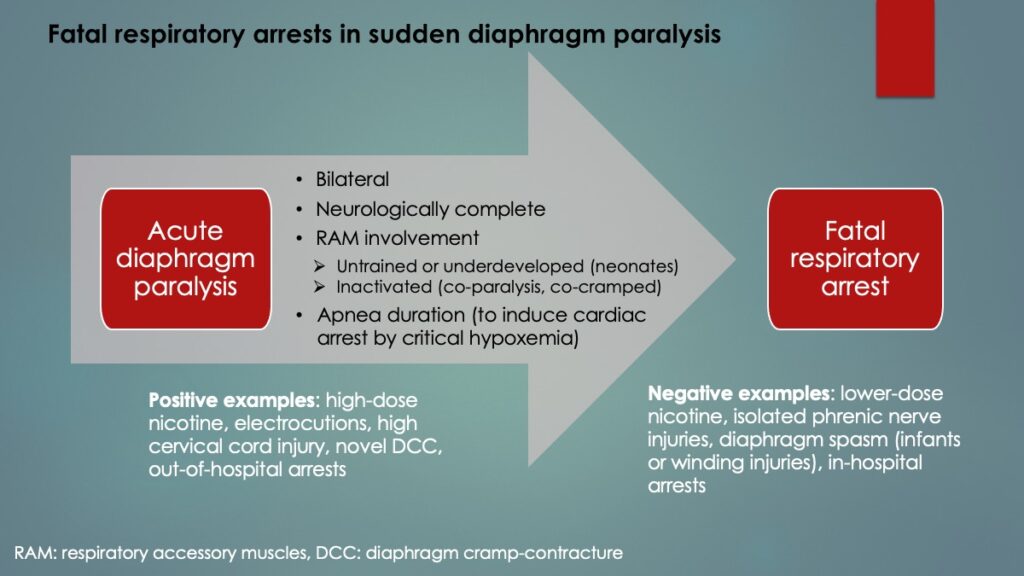
Hypothetical sequence in a SIDS death from diaphragm cramp
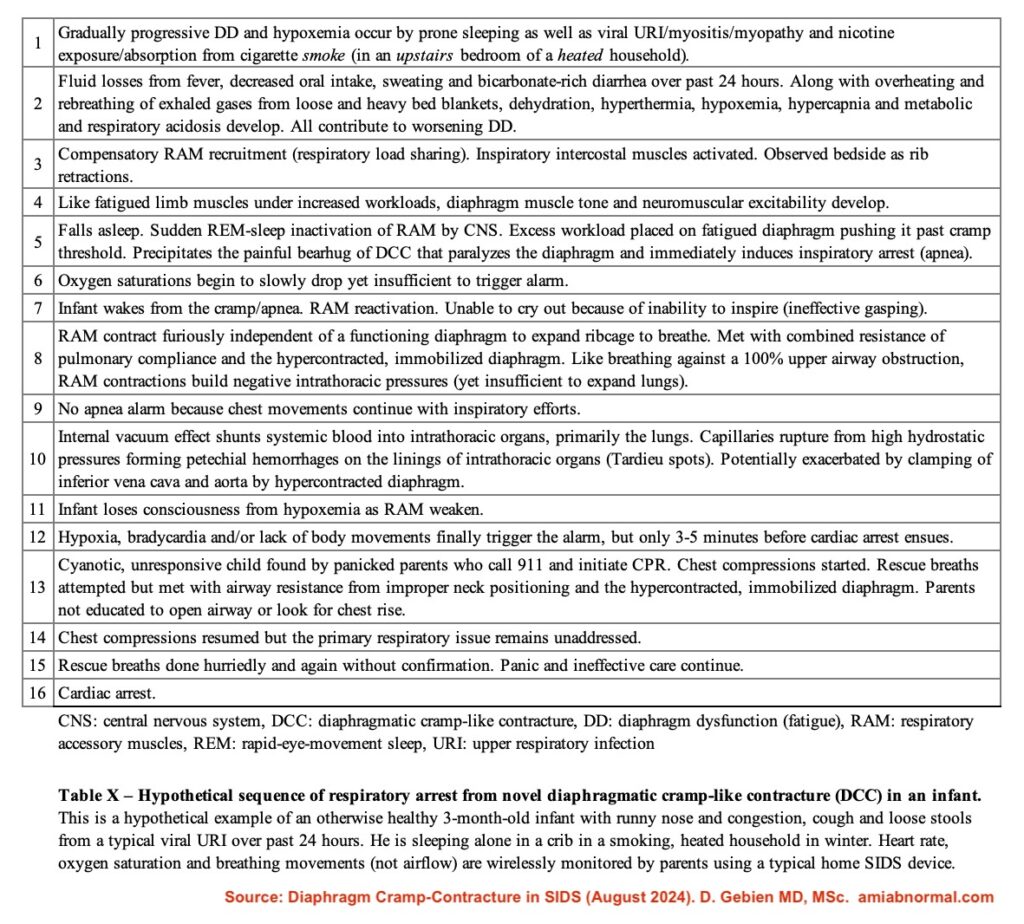
Here’s the comprehensive manuscript PDF, outlining this major medical discovery in-process.
The formal version of this peer-reviewed publication on diaphragm cramp in infants can be accessed by clicking here.
Here’s the plain-English version for all readers. It’s a bullet point summary explaining the diaphragm fatigue problem in young infants.
Why Diaphragm Cramp-Contracture — a novel SIDS mechanism — is unknown to medicine:
- Tragically, DCC is near-silent, where the victim is unable to breathe in and cry out for help.
- DCC is triggered suddenly, spontaneously and unpredictably, making it difficult to observe or measure scientifically.
- Specialized tests are needed to reveal it (e.g. fluoroscopy, ultrasound, RIP, electromyography).
- The diaphragm is internal, thus, unable to visualize diaphragm spasms or cramps.
- It induces respiratory arrest which masquerades as a seizure, choking episode or cardiac arrest.
- Sudden respiratory arrest is actually quite difficult to recognize, even by a medical professional.
- Most apnea alarms (at home and hospital) monitor respiratory movements but not airflow. They will miss the initial respiratory arrest of DCC because the victim’s chest continues to move and expand a bit.
- Few signs remain at autopsy. However, disrupted diaphragm myofibers and contraction band necrosis have been documented in systematic diaphragm histological studies.
- Autopsies in sudden unexpected deaths do not routinely assess the diaphragm. This includes SIDS, SUDC (sudden unexplained deaths in childhood) and SCD (sudden cardiac deaths in adults).
- Inexplicably and despite compelling evidence, modern medicine has cast a blind eye to the diaphragm as being responsible for causing serious disease.
What are Diaphragm Spasms?
- Coming soon. For now though…
- The plain-English version of our groundbreaking research paper in SIDS above (in PDF) can also be accessed online…

One reply on “Groundbreaking SIDS Discovery | Sudden Unexpected Deaths”
Hey people!!!!!
Good mood and good luck to everyone!!!!!